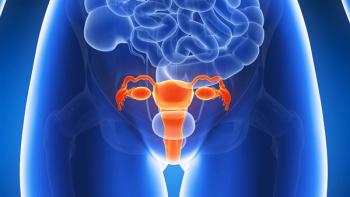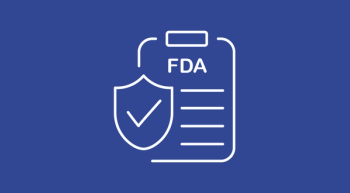
Adding Isatuximab to KRd May Boost MRD Negativity in Newly Diagnosed Multiple Myeloma
The rate of minimal residual disease negativity at 21 months was 77% among patients who received isatuximab-irfc, carfilzomib, lenalidomide, and dexamethasone.
Rates of minimal residual disease (MRD) negativity at the 10-5 and 10-6 cutoffs were superior among patients with newly diagnosed multiple myeloma who received a regimen of isatuximab-irfc (Sarclisa), carfilzomib (Kyprolis), lenalidomide (Revlimid), and dexamethasone (Isa-KRd) vs those who received carfilzomib, lenalidomide, and dexamethasone (KRd), according to findings from the phase 3 IsKia trial (NCT04483739) presented during the
“The primary end point of the study was met,” Francesca Gay, MD, PhD, said in a presentation of the data. “The rate of MRD negativity by intention-to-treat analysis was significantly higher with Isa-KRd vs KRd.” Gay is an associate professor in the Department of Molecular Biotechnology and Health Sciences at the University of Torino and is a hematologist at the Azienda Ospedaliero-Universitaria Città della Salute e della Scienza di Torino in Italy.
At a median follow-up of 21 months, the MRD negativity rates at the 10-5 cutoff post-consolidation were 77% in the Isa-KRd arm (n = 151) vs 67% in the KRd arm (n = 151; OR, 1.67; P = .049). At the 10-6 cutoff post-consolidation, the rates of MRD negativity were 67% in the Isa-KRd arm vs 48% in the KRd arm (OR, 2.29; P < .001). Following consolidation, the very good partial response (VGPR) rate was 94% in both arms; 74% of patients in the Isa-KRd arm experienced a complete response compared with 72% in the KRd arm.
“In the context of this highly effective regimen that produced a high rate of response, the 10-6 MRD negativity cutoff might be more informative than [another] response category. The follow up of this trial is short—we will probably be able to analyze the 1-year sustained MRD negativity [data] in the coming years, and with longer follow-up, survival end points,” Gay said. “The trial can potentially offer the opportunity to explore [the] correlation between depths of MRD negativity and survival end points.”
Enrollment Criteria and Dosing
Patients enrolled in the trial were less than 70 years of age and had transplant-eligible newly diagnosed multiple myeloma. The primary end point was MRD negativity by next-generation sequencing (NGS) after post-autologous stem cell transplant (ASCT) consolidation. Secondary end points included MRD negativity after induction, progression-free survival, and sustained MRD negativity. MRD negativity was assessed by NGS following the induction, mobilization, post-ASCT consolidation, and light consolidation portions of the trial.
Patients in the KRd arm received four 28-day induction cycles of carfilzomib 20 mg/m2 on day 1 of cycle 1 followed by 56 mg/m2 on days 8, 15 of cycle 1 and on days 1, 8, 15 for cycles 2 to 4; lenalidomide 25 mg daily on days 1 to 21; and dexamethasone 40 mg on days 1, 8, 15, 22. Those in the Isa-KRd arm received isatuximab 10 mg/kg on day 1, 8, 15, and 22 during cycle 1 followed by 10 mg/kg on days 1 and 15 during cycles 2 to 4 in addition to the same schedule of KRd.
Following induction patients “proceeded with stem cell mobilization and collection, and high-dose chemotherapy and ASCT,” Hillmen explained. “After that, the other 4 cycles of full-dose consolidation with carfilzomib, lenalidomide, and dexamethasone [were at] exactly the same dose and schedule as during induction.”
Following post-ASCT consolidation, patients went to the light consolidation phase which included twelve 28-day cycles of reduced dose KRd. Patients in both arms received carfilzomib 56 mg/kg2 on days 1 and 15; lenalidomide 10 mg daily on days 1 to 21; and dexamethasone 20 mg daily on days 1 and 15.
Baseline patient characteristics were well balanced between both arms. Patients were a median age of 61 years old (range, 55-66) in the Isa-KRd arm compared with 60 years old (range, 54-63) in the KRd arm and most patients were female (52% vs 56%), respectively. Patients had 0 (56% vs 54%), 1 (35% vs 35%), or at least 2 (9% vs 11%) high-risk cytogenetic abnormalities with missing data reported for 11 and 12 patients, respectively.
Per Second Revision of International Staging System criteria, patients in the Isa-KRd arm vs Krd arm had stage I (24% vs 25%), II (32% vs 34%), III (37% vs 37%), or IV (6% vs 4%) disease with 12 patients in both arms reported as missing data, respectively. Per Revised International Staging System criteria, patients had stage I (35% vs 34%), II (58% vs 59%), or III (7% vs 7%) disease, with 9 and 8 patients reported as missing data, respectively. Patients had standard risk disease (82% vs 81%) or high risk (18% vs 19%) per International Myeloma Working Group criteria with 11 and 12 patients missing data, respectively.
Additional Findings and Safety
MRD negativity rates improved over time—at the 10-5 cutoff they were 45% vs 26% (OR, 2.34; P < .001) post-induction, 64% vs 49% (OR, 1.93; P = .006) post-ASCT, and 77% vs 67% (OR, 1.67; P = .049) post-consolidation in the Isa-KRd vs KRd arms, respectively. At the 10-6 cutoff MRD negativity rates were 27% vs 14% (OR, 2.36; P = .004) post-induction, 52% vs 27% (OR, 3.01; P < .001) post-ASCT, and 67% vs 48% (OR, 2.29; P < .001) post-consolidation in the Isa-KRd vs KRd arms, respectively.
A subgroup analysis revealed that “the increase in [the] MRD negativity rate in the Isa-KRd arm was seen in all the subgroups of patients analyzed at the 10-5 and 10-6 cutoff. Interestingly, this was true for standard risk, high-risk, and very high-risk patients,” Gay said.
At the 10-5 cutoff, the post-consolidation MRD negativity rates in patients with very high-risk disease were 77% in the Isa-KRd arm vs 53% in the KRd arm. At the 10-6 cutoff these rates were 77% vs 27%, respectively.
Regarding treatment-related adverse effects (TRAEs), patients had at least 1 any grade hematologic toxicity in the Isa-KRd arm (55%) and the KRd arm (44%) with the most common including neutropenia (41% vs 26%), thrombocytopenia (34% vs 25%), and anemia (21% vs 19%), respectively. Grade 3 to 4 TRAEs were observed in 40% and 30% of patients, respectively.
Any grade non-hematologic toxicities occurred in 90% of patients in the Isa-KRd arm and 85% of patients in the KRd arm; grade 3 or 4 toxicities occurred in 41% vs 37% of patients, respectively. Gay noted that treatment was manageable in both arms, and she highlighted that SARS-CoV-2 infection (26% vs 19%), infections not including COVID-19 (36% vs 32%), cardiac disorders (7% vs 13%), and thromboembolisms (8% vs 11%) were among any grade non-hematologic toxicities occurring in the trial.
Potential Caveat
Certain oncologists have expressed hesitancy over the utility of this agent in improving patient’s quality of life beyond the clinical setting.2
“Ixazomib is an expensive waste that really doesn’t help patients,” Aaron Goodman, MD, recently tweeted on the social medial platform now known as “X.” “Amazing this drug is still approved.”
References
- Gay F, Roeloffzen W, Dimopoulos MA, et al. Results of the phase III randomized IsKia trial: isatuximab-carfilzomib-lenalidomide-dexamethasone vs carfilzomib-lenalidomide-dexamethasone as pre-transplant induction and post-transplant consolidation in newly diagnosed multiple myeloma patients. Blood. 2023;142(suppl 1):4. doi:10.1182/blood-2023-177546
- @AaronGoodman33. Ixazomib is an expensive waste that really doesn’t help patients. Amazing this drug is still approved. Our society throws away money. Posted December 11, 2023. Accessed December 12, 2023.
https://twitter.com/AaronGoodman33/status/1734305677819138482
Newsletter
Knowledge is power. Don’t miss the most recent breakthroughs in cancer care.

















































































